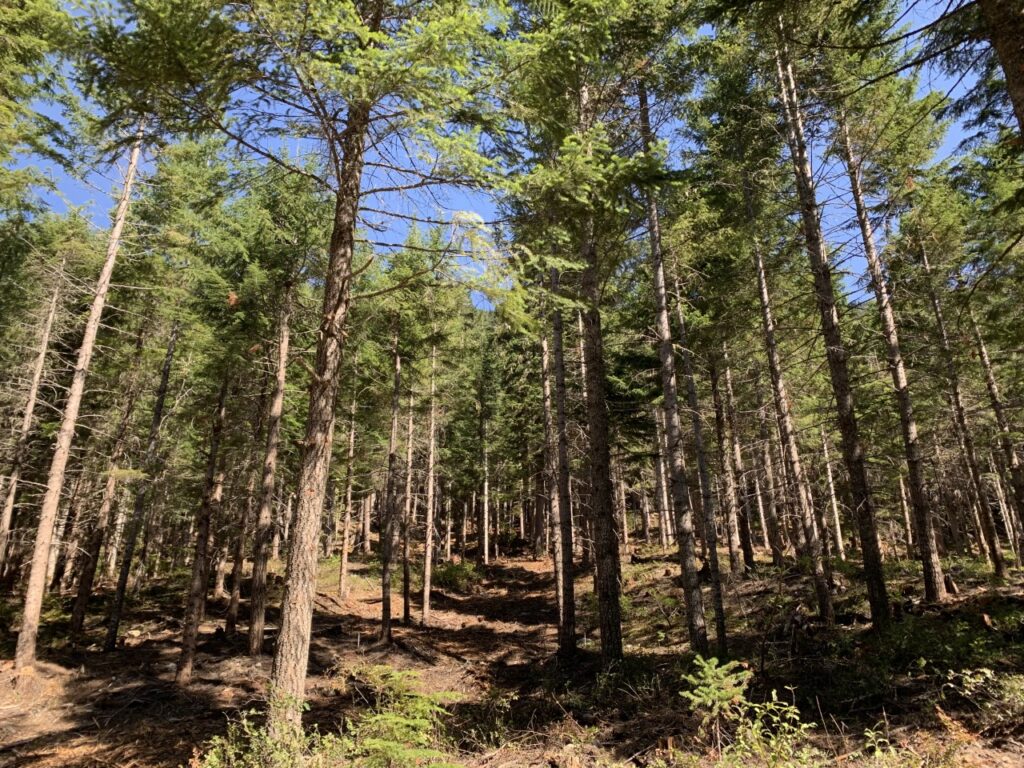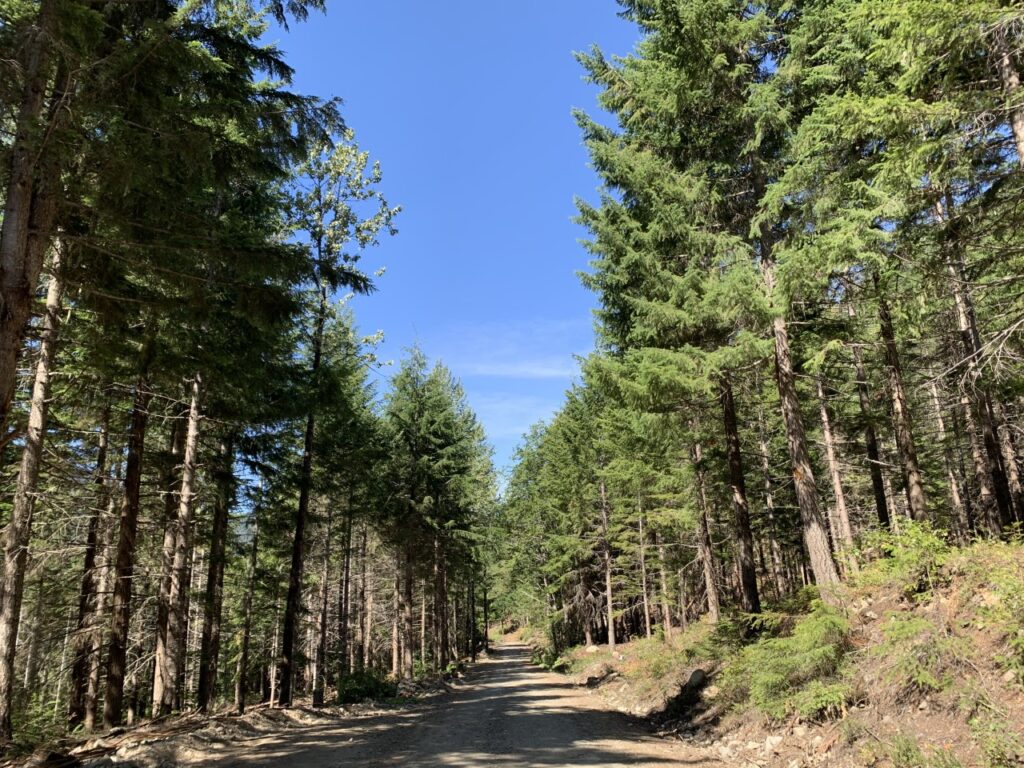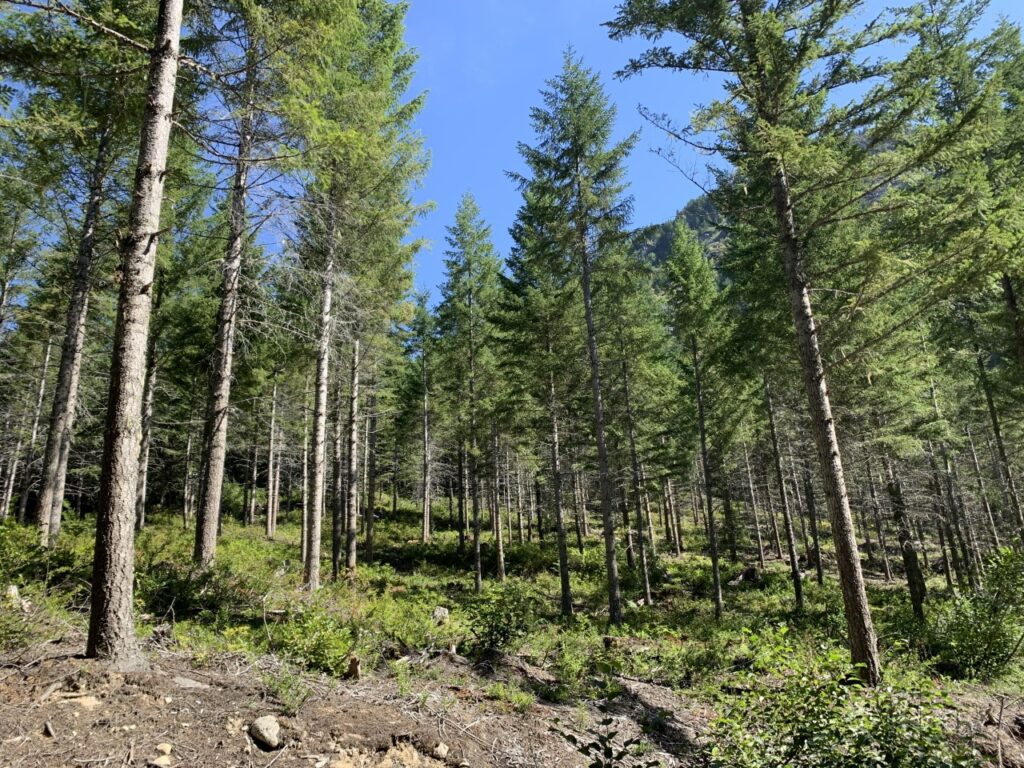Whistler, B.C. – The forests surrounding Whistler, B.C. offer a picturesque backdrop for the town’s world-class recreational opportunities. However, the managers of these forests face the dual challenge of preserving their natural beauty while also addressing the risk of wildfires that these forests present.
The Cheakamus Community Forest (CCF), governed by a non-profit society of representatives from the Resort Municipality of Whistler (RMOW) and the Líl̓wat and Squamish First Nations, realized the potential impact of a wildfire to the tourists and the critical importance of wildfire risk mitigation. One spark from an ignition source had the potential to start a fire that could spread and put the ski hill recreation area, walking and biking trails, and other important infrastructure like homes and transportation corridors at risk.

To mitigate this risk and to do so in a sustainable way, foresters from the Líl̓wat Forestry Ventures LP, an arm of the Líl̓wat First Nation, with funding from FESBC, set out to create a wildfire risk reduction plan which included consultation with the community and other stakeholders. One of the concerns identified by the community was around smoke from the burning of the debris from the treatments. The wildfire risk reduction treatments were completed by the Lil’wat Nation forestry crews resulting in a reduction of the forest fuels, minimizing smoke emissions and maintaining the forest recreation values. Moreover, the treated stands now have lower levels of fuel. Today, the successes of their efforts serve as a demonstration of the benefits that a tourist town can reap from implementing wildfire risk reduction measures.
“The Forest Enhancement Society of BC is a proven partner in delivering projects on the ground that benefit communities, workers, and the health of our forests,” said Bruce Ralston, Minister of Forests. “We are building on this foundation with an additional investment of $50 million for the Society to expand funding for projects that increase access to fibre, reduce emissions from slash pile burning and reduce the risk to people from wildfire.”
Dean Nelson, the Chief of the Líl̓wat First Nation, spoke about the forests where the work was conducted. He explained that the initiative was in response to the province-wide call for municipal preparedness and was prompted by the threat of wildfires and the impacts of climate change on communities and forests throughout B.C.
“For the residents of Whistler, this work was crucial to help prevent and raise awareness of the potential dangers of forest fires,” Nelson said. “For the people living in Whistler, this work is very important for the prevention and cautionary awareness of potential forest fire danger. The number of trees remaining after the treatment varied from site to site, from a density of 250 stems per hectare, up to 400 stems per hectare. Fibre utilization from the treatments was undertaken, sawlogs were marketed for timber, the lower-valued residue was used for firewood and compost, and burning was minimized.”
The wildfire risk reduction work carried out by Líl̓wat Forestry Ventures LP was focused on larger landscape-level fuel breaks that aimed to prevent fires from spreading from the south of Whistler, according to Klay Tindall, the General Manager of Forest Operations for the Líl̓wat Forestry Ventures LP.
“The plan was to remove approximately 45 per cent of the original stand of second-growth Douglas fir, totalling around 18,000 cubic metres. Where possible the residual fibre was utilized with lowered carbon emissions in mind. For instance, some fibre was chipped and mixed off-site with solid human waste to produce compost material. By avoiding burning the residual material, a reduction in the release of PM2.5 smoke particulate was achieved. ” said Tindall. “This would not have been possible without the funding and support from FESBC as these are rather smaller areas, and the cost of working on these is rather high. The treated area is now being used for new mountain bike trails by the Whistler Off Road Cycling Association and is giving them a great spot to build some more beginner and intermediate trails.
The project also had a significant impact on the Lilwat community members employed by Líl̓wat Forestry Ventures LP, according to Reno Joe, the contract manager. The work provided a unique opportunity for the Nation to empower its youth and enhance their training. Reno stated, “Everything was locally sourced, and we aimed to bring in experienced professionals from neighbouring Nations. The project helped us build our First Nations’ capacity and gain valuable work experience. We are proud to say that we have engaged more young people in the community, and had six Lil’wat and four additional youths who participated in the project. Of these, one Lil’wat youth is already studying Fire Management at the Vancouver Island University, and one other Lil’wat youth is getting his bachelor’s degree in Forest Ecology and Management from UNBC.”
The project also faced several challenges. Chief Nelson acknowledged that the first obstacle was gaining recognition as competent forestry professionals. Despite this difficulty, the First Nations company was able to demonstrate its expertise and completed the project.
Jordon Gabriel, the Cultural and Community Forestry Manager, who works for Lil’wat Forestry Ventures, spoke about additional challenges such as residents’ concerns about declining property values, complaints about smoke from prescribed burns, and difficulties with the public entering active work sites. “Managing public access during the work and gaining support from local residents were challenges at the time, but now, even they can see the positive outcomes of this work,” Gabriel said.
Heather Beresford, CCF’s Executive Director noted that one of the project’s main challenges was helping local residents understand the importance of this forest thinning work in the long term.
“Some Whistler residents think that the thinning work makes the forests look ‘ugly’ and may even increase the risk of wildfire since they believe the forests dry out earlier in the spring. In response, the RMOW and CCF are implementing a monitoring program to measure certain characteristics pre- and post-treatment to see what is actually happening in the forests. This will give us valuable insight and ensure that our actions are having a positive impact,” said Beresford.
Brian Watson, RPF, Operations Manager with FESBC said, “The work that Lil’wat Forestry Ventures LP completed on behalf of the Cheakamus Community Forest is important in that it occurred in a part of the province that has a high profile and where wildfire risk reduction work is just starting to be implemented. It’s important that people see this work so that they can be part of the conversation around wildfires and the risks they pose to our communities. What people will not see is that the project phased out most of the burning of low-value fibre that is usually associated with this work. When you consider the proximity of this work to homes and businesses, the benefits to human health are meaningful, not to mention the positive impact on the atmosphere.”
FESBC would like to gratefully acknowledge the financial support of the Province of British Columbia through the Ministry of Forests.



